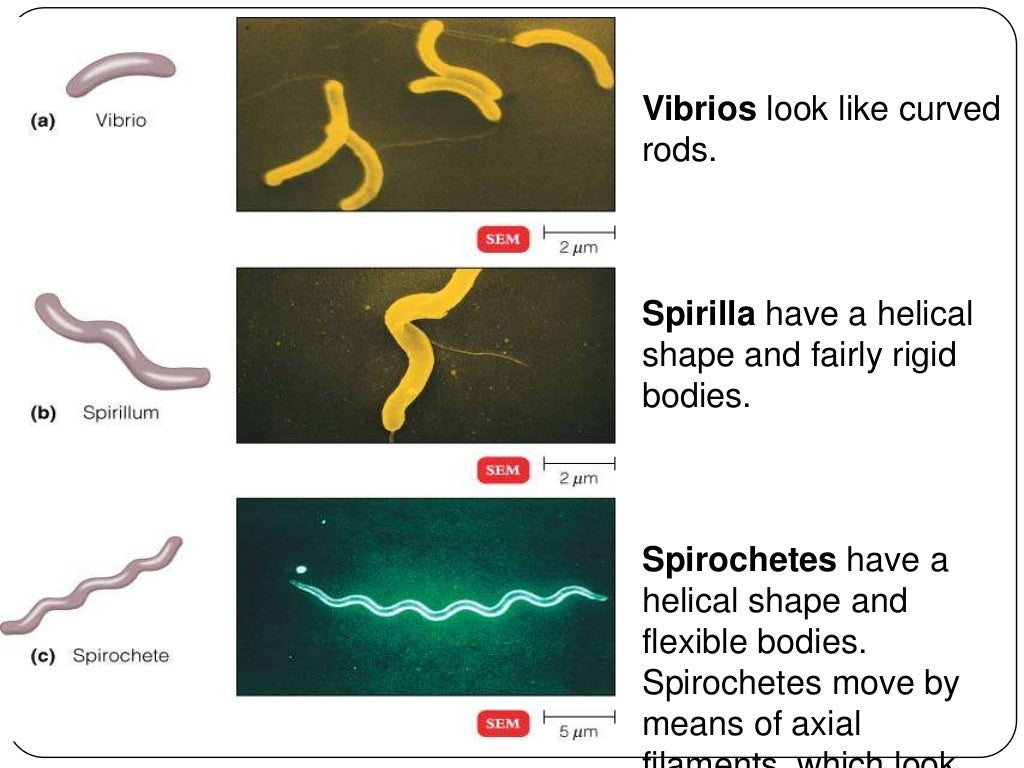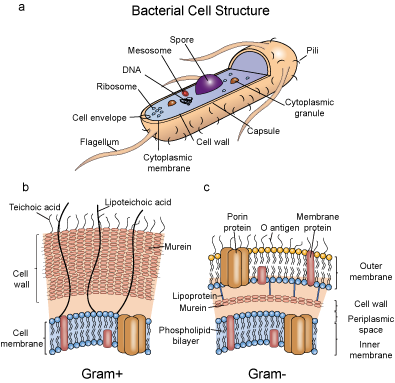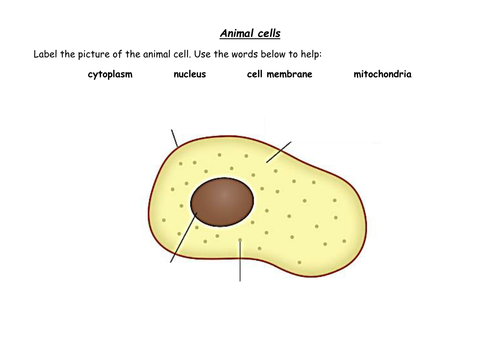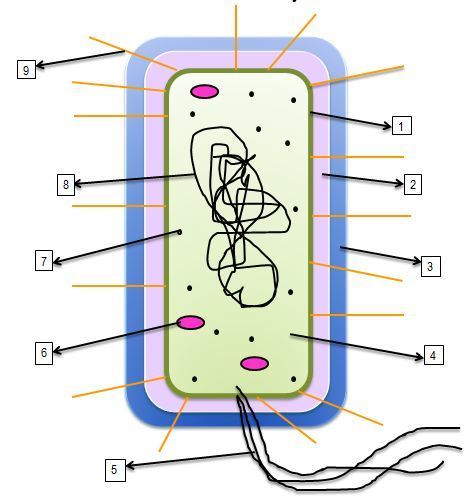41 bacterial cell without labels
Rapid identification of pathogenic bacteria using Raman ... - Nature Because patient samples may contain very low numbers of bacterial cells without culturing (e.g. 1 CFU/mL or fewer in blood 40), only a few individual bacterial spectra per patient may be available ... LevitasBio introduces label-free levitation technology - LevitasBio Published on Biotechniques - MENLO PARK, CA - 16 June 2020 Today, LevitasBio has announced the commercial release of its flagship product - LeviCell TM - introducing a disruptive new method for cell researchers and scientists to sort live cells without the use of markers or antibodies.
Bacteria in Microbiology - shapes, structure and diagram Bacteria cells are the smallest living cells that are known; even though viruses are smaller than bacteria, viruses are not living cells. There are different types of bacteria with various sizes, shapes, and structures. The bacteria shapes, structure, and labeled diagrams are discussed below. Sizes

Bacterial cell without labels
Bacterial cells - Cell structure - Edexcel - GCSE Combined Science ... Bacterial cells Bacteria are all single-celled. The cells are all prokaryotic. This means they do not have a nucleus or any other structures which are surrounded by membranes. Larger bacterial... Bacteria Label Teaching Resources | Teachers Pay Teachers plant, animal and bacteria cell structure with labels to be used as educational art for any kid's playroom, classroom, montessori or homeschooling areas.science printable wall art set of 3 - digital downloadset includes 3 design printables:• plant cell structure chart• animal cell structure chart• bacteria cell structure chartall digital jpeg … Introduction to Bacteria - Let's Talk Science Bacterial cells are much smaller than human cells. Bacterial cells can measure from about 1 to 10 μm long. Most of them are only about 1 to 2 μm in diameter. 1 μm, or micrometre, is 1 000 times smaller than a millimetre. That is very tiny! It's much smaller than the human red blood cell, which is (on average) about 7 μm in diameter.
Bacterial cell without labels. Label-free bacterial imaging with deep-UV-laser-induced native ... Label-free bacterial imaging with deep-UV-laser-induced native fluorescence Appl Environ Microbiol. 2010 Nov;76 (21):7231-7 ... Given exposure times of 100 μs and low excitation intensities, this technique enables rapid imaging of bacterial communities and cells without irreversible sample alteration or destruction. We also demonstrate the ... Structure - Medical Microbiology - NCBI Bookshelf Wall-Less Forms: Two groups of bacteria devoid of cell wall peptidoglycans are the Mycoplasma species, which possess a surface membrane structure, and the L-forms that arise from either Gram-positive or Gram-negative bacterial cells that have lost their ability to produce the peptidoglycan structures. Cytoplasmic Structures Bacterial Cell No Labels clip art - Clker Download Clker's Bacterial Cell No Labels clip art and related images now. Multiple sizes and related images are all free on Clker.com. Facebook Login; X. E-mail Password. ... bacterial cell without labels; bacterial cell no labels; cell no labels; bacteria cell without labels; Advertise on clker; Report a bug; Request a feature; tag; FAQ; Stains - Microbiology Resource Center - Truckee Meadows ... - TMCC Almost all bacteria can be divided into two groups, Gram negative or Gram positive. A few bacteria are gram variable. Trichomonas, Strongyloides, some fungi, and some protozoa cysts also have a Gram reaction. Very small bacteria or bacteria without a cell wall, such as Treponema, Mycoplasma, Chlamydia, or Rickettsia do not have a gram reaction ...
Morphology, Different shapes of bacterial cell - BYJUS Genus Streptobacillus contains gram-negative, aerobic or facultative anaerobic bacteria.Examples are Streptobacillus moniliformis, Streptobacillus felis, etc. Coccobacilli: These are short compared to other bacilli and oval in shape, they appear like a coccus.Examples are Chlamydia trachomatis, Haemophilus influenzae, Gardnerella vaginalis, etc. Breaking free of labels | Nature Reviews Microbiology This month's Under the Lens discusses the use of a novel label-free imaging method to study pilus dynamics at high spatial and temporal resolution. Many pathogenic bacteria are able to crawl ... 3 Common Bacteria Shapes - ThoughtCo Spirochetes (also spelled spirochaete) bacteria are long, tightly coiled, spiral-shaped cells. They are more flexible than spirilla bacteria. Examples of spirochetes bacteria include Borrelia burgdorferi, which causes Lyme disease and Treponema pallidum, which causes syphilis. Vibrio Bacteria "Raised Without Antibiotics" Labels Found to be Misleading Researchers took note of labeling that's been approved by the US Department of Agriculture (USDA), and has given retailers and meat producers credibility when making claims about RWA. However, the USDA makes no verification of these claims, producers must sign an affidavit and outline their protocols to be approved to use the labels.
Bacterial cell structure and function - Online Biology Notes Bacterial cell have simpler internal structure. It lacks all membrane bound cell organelles such as mitochondria, lysosome, golgi, endoplasmic reticulum, chloroplast, peroxisome, glyoxysome, and true vacuole. Bacteria also lacks true membrane bound nucleus and nucleolus. The bacterial nucleus is known as nucleoid. Bacteria Cell: Different Parts of a Generalized Bacteria Cell ... ADVERTISEMENTS: The different parts of a generalized bacteria cell have been-shown in Figure 2.3 and have been described as follows: 1. Flagella: Bacterial flagella are thin filamentous hair-like helical appendages that protrude through the cell wall and are responsible for the motility of bacteria. Most of the motile bacteria possess flagella. Its length is about […] Mastering Microbiology Chapter 20 Flashcards - Quizlet The goal of antimicrobial treatment is to kill or inhibit the growth of microbes without damaging the host. This is referred to as selective toxicity. To achieve selective toxicity, antimicrobial drugs generally target bacterial cell structures, enzymes, or processes that are unique to the microbe and not found in host cells. Label or Concept - What Is a Pathobiont? - Trends in Microbiology The term ´pathobiont´ has already been widely used to label bacteria that have been linked to a disease merely based on sequence-based correlations with diseased individuals [. 23. ]. This is inherently error-prone as microbial community shifts can also occur as a consequence of disease [. 24.
Bacterial Cell Structure Labeling Diagram | Quizlet Cytoplasm Water-based solution filling the entire cell Ribosomes Tiny particles composed of protein and RNA that are the sites of protein synthesis Nucleoid Composed of condensed DNA molecules. Cell Membrane A thin sheet of lipid and protein that surrounds the cytoplasm and controls the flow of materials in and out of the cell S Layer
Bacteriophage - Wikipedia A bacteriophage (/ b æ k ˈ t ɪər i oʊ f eɪ dʒ /), also known informally as a phage (/ ˈ f eɪ dʒ /), is a virus that infects and replicates within bacteria and archaea.The term was derived from "bacteria" and the Greek φαγεῖν (phagein), meaning "to devour".Bacteriophages are composed of proteins that encapsulate a DNA or RNA genome, and may have structures that are either ...
Fast Label-Free Nanoscale Composition Mapping of Eukaryotic Cells Via ... Mapping the biochemical composition of eukaryotic cells without the use of exogenous labels is a long-sought objective in cell biology. Recently, it has been shown that composition maps on dry single bacterial cells with nanoscale spatial resolution can be inferred from quantitative nanoscale dielectric constant maps obtained with the scanning dielectric microscope.
Bacterial Cell: Structure and Components | Microbiology Bacterial cells (prokaryotic cells) are structurally much simpler than eukaryotic cells and the two cell types are compared in Table 3.2. They consists of various cell surface structures, cell wall, plasma membrane, many cytoplasmic inclusions, and the bacterial chromosome (nucleoid). Except some, all structures do not occur in every genus.
Designer label for a bacterial cell 'jacket' | UDaily Labeling the cell 'jacket' Now back to that three to five pounds of bacteria we carry around... Much of the weight comes from the bacteria's cell walls, or "jackets," as Grimes refers to them. Firm, yet flexible, they are composed of peptidoglycan — a mesh-like polymer made of protein (peptides) and sugar (glycan) molecules.
Biology Pictures: Cell Membrane Structure without labels - Pinterest Cell Membrane Structure without labels Biology Pictures: Large collection of high quality biology pictures, photos, images, illustrations, diagrams and posters on marine biology, cell biology, microbiology... for educational purposes. T Tarah Haro Williams 227 followers More information
Cell Structure With Labels Teaching Resources | Teachers Pay Teachers A worksheet of a bacterial cell that students can label independently or with teacher guidance. The diagram could be used in assessment too rather than just as a class activity. Students can also find the function of the organelles and add 3 more organelles to the diagram (mesosome, flagellum and capsule)There is an answer sheet included.
Bacteria Under the Microscope Bacteria are single-celled organisms that are defined as prokaryotes, these are organisms that have cells with no defined nucleus or other specialized organelles. In total, there are estimated to be millions of species of bacteria, which are diverse in shape, size and many other defining features.
Structure of Bacterial Cell (With Diagram) - Biology Discussion It is 10-25 nm in thickness. It gives shape to the cell. Nucleus: The single circular double-stranded chromosome is the bacterial genome. Other structures include cytoplasmic membrane, mesosomes, ribosomes and cytoplasmic inclusions. Unlike eukaryotes cytoplasm does not contain ribosome, Golgi, cytoskeleton.
Bacteria - Definition, Structure, Diagram, Classification The structure of bacteria is known for its simple body design. Bacteria are single-celled microorganisms with the absence of the nucleus and other c ell organelles; hence, they are classified as prokaryotic organisms. They are also very versatile organisms, surviving in extremely inhospitable conditions. Such organisms are called extremophiles.

bacterial cell shapes and arrangements - Google Search | biology ideas classification | Pinterest
Introduction to Bacteria - Let's Talk Science Bacterial cells are much smaller than human cells. Bacterial cells can measure from about 1 to 10 μm long. Most of them are only about 1 to 2 μm in diameter. 1 μm, or micrometre, is 1 000 times smaller than a millimetre. That is very tiny! It's much smaller than the human red blood cell, which is (on average) about 7 μm in diameter.
Bacteria Label Teaching Resources | Teachers Pay Teachers plant, animal and bacteria cell structure with labels to be used as educational art for any kid's playroom, classroom, montessori or homeschooling areas.science printable wall art set of 3 - digital downloadset includes 3 design printables:• plant cell structure chart• animal cell structure chart• bacteria cell structure chartall digital jpeg …
Bacterial cells - Cell structure - Edexcel - GCSE Combined Science ... Bacterial cells Bacteria are all single-celled. The cells are all prokaryotic. This means they do not have a nucleus or any other structures which are surrounded by membranes. Larger bacterial...





Post a Comment for "41 bacterial cell without labels"